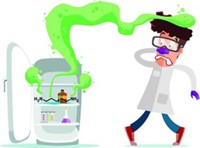Advertisement
Grab your lab coat. Let's get started
Welcome!
Welcome!
Create an account below to get 6 C&EN articles per month, receive newsletters and more - all free.
It seems this is your first time logging in online. Please enter the following information to continue.
As an ACS member you automatically get access to this site. All we need is few more details to create your reading experience.
Not you? Sign in with a different account.
Not you? Sign in with a different account.
ERROR 1
ERROR 1
ERROR 2
ERROR 2
ERROR 2
ERROR 2
ERROR 2
Password and Confirm password must match.
If you have an ACS member number, please enter it here so we can link this account to your membership. (optional)
ERROR 2
ACS values your privacy. By submitting your information, you are gaining access to C&EN and subscribing to our weekly newsletter. We use the information you provide to make your reading experience better, and we will never sell your data to third party members.
Environment
Defending Ozone Generators, More Smelly Stories
by Deanna Miller
April 18, 2005
| A version of this story appeared in
Volume 83, Issue 16
Rob Coleman of Columbus, Ohio, writes that, despite the incorrect claims in the PROZONE ad (C&EN, Jan. 24, page 60), "ozone generators are highly useful deodorizers." Coleman says he and his family have a small ($600) unit in their home that minimizes the odors from their two Doberman pinschers and, in the summertime, from mildew. In addition, they lent the unit to some friends who'd had a kitchen fire, and after two days at full blast, the smells were mostly gone. He says, "Normally, I can just barely smell the ozone."
Harold L. and Susan L. Conder of New Springfield, Ohio, lament that the PROZONE ad gives ozone a bad name. "This is unfortunate," they say, "because it is a well-established fact that ozone is a great natural oxidizer and does a good job destroying offensive odors, mold, and bacteria in the home when properly applied." They mention EcoQuest International as an example of a responsible company that uses low levels of ozone as "one of several technologies in purifying the air."
Readers continue to share their tales of sensitive sniffers (C&EN, Jan. 17, page 96). Stephen H. Stoldt of Concord, Ohio, writes that in 1979 the potable water wells serving the main section of his community--though not his area--were found to be contaminated with volatile organics. He says, "A commercial lab used headspace gas-liquid chromatography (GLC) to identify most of the contaminants as chlorinated solvents, which were traced to nearby improper disposal of degreasing wastes."
But a second problem soon appeared: reports of a strong odor in the water along with two new GLC peaks that the lab was unable to identify. Stoldt recounts: "While we were visiting friends who lived in the affected area, they complained about this odor from the water and turned on the hot-water faucet in the kitchen. The pungent odor immediately sent me back a decade on a memory trip."
The water smelled to Stoldt like "the now-infamous methyl tert-butyl ether (MTBE) and diisopropyl ether," which he'd encountered at a former employer while developing unleaded gasolines using oxygenates as blending components to improve the octane number. Stoldt quickly passed along the information about the identities of the ethers and their most likely source: leaking underground gasoline storage tanks.
Knowing what to look for, the GLC lab confirmed the presence of both ethers at levels far above their odor thresholds. The oil company responsible for the leaks paid for the installation and operation of cleanup equipment for the wells. Stoldt's findings were published in the Journal of the American Waterworks Association. Stoldt concludes: "This documented experience of ours made it mildly amusing to read of the recent 'surprise' at finding MTBE from leaking gasoline storage tanks in California groundwater."
A couple more anecdotes come from Hugh W. Thompson of Newark, N.J., who reminisces about a grad school roommate possessing a talented nose "leagues beyond my own poor sniffer," Thompson says. "When I would occasionally uncap a bottle of CS2 in the tiny, separate infrared room at the remote end of the large lab he worked in, it usually took about 15 seconds for John to holler out, 'Who's using carbon disulfide?' I could hardly smell it."
But an acute sense of smell, while useful, is not always fun for the owner. Thompson says that one of the crosses John bore was the presence in the same lab of a project involving carboxylic acids of medium molecular weight. "These were small enough to be volatile, but big enough to linger a long time, and they smelled like the rankest of human body odor," Thompson explains.
One rainy evening in downtown Boston, so far from their school that they didn't expect to encounter other students, John and a second roommate got on a bus so packed that they couldn't see to the back of it. Thompson says: "Almost the moment the door closed, John turned and said, 'Burkard's on this bus!' Sure enough, as the bus gradually emptied, there at the back sat the student who worked on those loathsome carboxylic acids."
Poor John. That guy needs the deodorizing power of ozone.
This week's column was written by




Join the conversation
Contact the reporter
Submit a Letter to the Editor for publication
Engage with us on Twitter